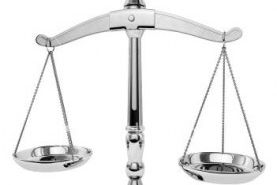The Balance Sheet Explained
While the Profit & Loss Account shows what has happened in a business over a period of time, the Balance Sheet is a snapshot of how much your business owns (its assets) and how much it owes (its liabilities) at a point in time. This is usually at the company’s year-end, although can be at any time.
Fixed Assets
These are assets that your business owns and can be tangible (such as motor vehicles, furniture or computer equipment) or intangible (which you can’t see or touch such as the value of patents or goodwill).
Current Assets
These are easier to turn into cash and include;
- Stock which could be raw materials, work in progress and finished goods.
- Trade debtors are customers who have not paid yet.
- Other debtors are monies owed by a non-customer such as a HMRC repayment.
- Cash held in hand and in bank accounts are also shown.
Current Liabilities
These are debts expected in less than 12 months and include;
- Trade Creditors are suppliers who you have not paid yet.
- Accruals are goods and services used by the business but not yet invoiced such as accountancy work completed but not yet billed.
- Bank loans or overdraft but only the amounts repayable within 12 months.
- Taxes such as Corporation Tax, VAT and PAYE.
- Other creditors are monies owed to anyone else and could include director’s loans.
Net Current Assets
Current Assets less Current Liabilities - shows how easily a business can pay its immediate debts with the higher the figure, the safer the business.
Long Term Liabilities
These are debts payable after 12 months and can include bank loans and hire purchase agreements.
Net Assets
Total Assets less Total Liabilities – if this is negative then the business cannot repay its debts and is considered insolvent.
Capital and Reserves
This shows how the business is funded and is usually share capital plus retained profits. If the company is more complicated it may have a share premium account (where shares have been sold at more than their face value) or a revaluation reserve (where property still owned is valued at above the historic purchase price).
Topics
Archive
- 2024
- March 2024 (1)
- January 2024 (1)
- 2023
- December 2023 (2)
- November 2023 (2)
- September 2023 (2)
- August 2023 (1)
- July 2023 (3)
- June 2023 (3)
- May 2023 (2)
- April 2023 (1)
- March 2023 (4)
- February 2023 (2)


Comments for The Balance Sheet explained